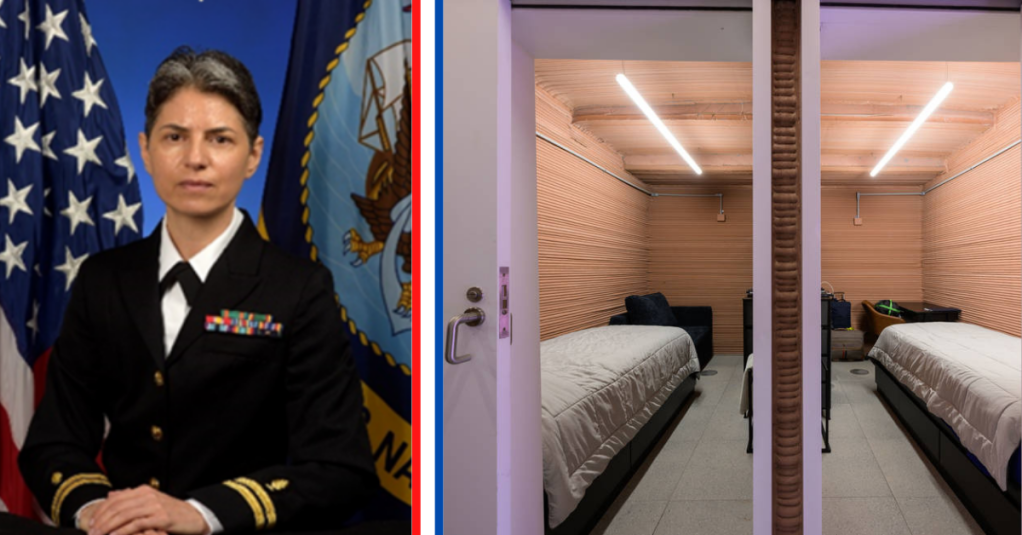Lt. Anca Selariu, a U.S. Navy microbiologist, went into a habitat on Mars, where she and three others will spend the next year. The habitat mission is, of course, not on the actual red planet. It’s in Texas, at NASA’s Johnson Space Center. It is an important step toward actually sending a human mission to Mars, however.
Called CHAPEA, or Crew Health and Performance Exploration Analog, it’s the first of three upcoming simulations through 2026. The goal is to help planners and scientists working on any long-term, crewed mission to Mars learn what it might take to make the mission more successful.
Selariu’s expertise is critical to the success of the CHAPEA mission. She joined the habitat from the Naval Medical Research Unit Indo-Pacific, and brings experience in vaccines, gene therapy, and infectious disease research, among other areas of expertise, to the habitat, called Mars Dune Alpha, a 1,700-square-foot, 3D-printed environment.

Joining her in the habitat is Kelly Haston, a civilian stem cell biologist and member of the Mohawk nation who will be the mission commander. Civilian structural engineer Ross Brockwell will serve as the mission’s flight commander. He is an expert public works administrator with decades of experience in infrastructure and building design.
Also joining the four-person team is Nathan Jones, a civilian physician from Springfield, Illinois. His experience and expertise in emergency medicine and austere medicine makes him a perfect person to serve as the mission’s medical officer.
The crew went into the habitat on June 23, 2023, where they will spend the next 375 days. Over this period of time, they will have to respond to problems like limited resources, equipment failures, communications issues, water shortages and environmental hazards. They will be expected to live, work, exercise, and perform experiments in a simulated Mars environment.
This simulated environment includes leaving the compound for missions to the (simulated) Martian landscape. They will make extravehicular activities (EVAs), where they will need to wear space suits to protect themselves from the environment on Mars. Adding to the realism of the mission, the crew will have to experience the same time delay in communications to mission control, an estimated 22 minutes. They will eat freeze-dried food and keep the same schedule as a real Mars mission would.

NASA and the U.S. Navy have a long history of teaming up for space missions. For 64 years, Navy researchers, astronauts, and engineers have participated in nearly every NASA initiative since the space agency’s inception. Alan Shepard, the first American in space, was a Naval officer, as was Wally Schirra, the only astronaut to fly in all three of the early space programs. Jim Lovell, commander of Apollo 13 was also a Naval officer.
Anca Selariu is joining this prestigious list of Navy officers who have performed critical work in the advancement of American space knowledge. There are little details available about the other two CHAPEA missions, but Selariu and her colleagues will emerge from the habitat in July 2024.
“To contribute to the ultimate stage of discovery for humankind as a result of all of these accumulated experiences is just extraordinary,” Selariu said in a statement. “I hope this mission will be the steppingstone for the first humans on Mars someday.”

